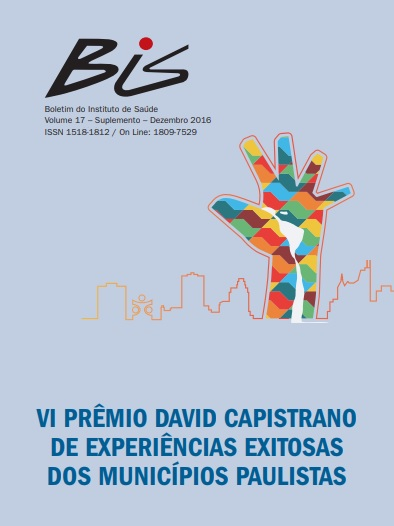Abstract
Chronic pain can be persistent and recurrent, it has a long treatment process that includes rest and drug use for symptom relief, which, on many occasions, can result in unpleasant side effects, which makes it difficult for people to join Pharmacological treatment. Low adherence to treatment and possible side effects are directly related to the low efficacy of continuous medication use, making it necessary a new form of multidimensional treatment, acting not only on the symptoms but also on the biopsychosocial characteristics of the patient. Faced with this problem, the formation of a group for the relief of chronic pain at UBS Vila Marchi was conceived to address the biological, psychological and social plan of the patients through a program of stress management, patient and family education, relaxation and orientations of practices for everyday activities. In addition to qualification of referrals, the article also reports the physical activities and social interaction that provide better quality of life to the participants during the waiting period between the first consultation and medical referral to the rheumatologist.
References
2. IASP – Classification of chronic pain. Pain. 1986;3:S1-S226
3. Gureje O, Von KM, Simon GE, Gater R. Persistent pain and well-being: a World Health Organization Study in Primary Care. JAMA. 1998;
280(2):147-51
4. Sewitch MJ, Dobkin PL, Bernatsky S, Baron M, Starr M, Cohen M, et al. Medication non-adherence in women with fibromyalgia.
Rheumatology (Oxford). 2004; 43(5):648-54
5. Kerns R, Otis J, Rosenburg R, Reid C. Veterans’ reports of pain and associations with ratings of health, healthrisk behaviors, affective
distress, and use of the healthcare system. J Rehabil Res Dev. 2003; 40(5):371-80
6. Holtz VV, Stechman Neto J. Epidemiologia da dor em pacientes de Curitiba e região metropolitana. Revista Dor.2008; 9(8):1217-24
7. Zeller JL, Burke AE, Glass RM. JAMA patient page. Acute pain treatment. JAMA. 2008; 299(1):128
8. Shang AB, Gan TJ. Optimising postoperative pain management in the ambulatory patient. Drugs. 2003; 63(9):855-67
9. Turk DC, Dworkin RH, Burke LB, Gershon R, Rothman M, Scott J, et al. Developing patient-reported outcome measures for pain clinical
trials: IMMPACT recommendations. Pain. 2006; 125(3):208-15.
10. Faas A. Exercises: which ones are worth trying, for which patients, and when? Spine. 1996; 21(24):2874-8.11. Flor H, Hermann C.
Biopsychosocial Models of Pain. In: Dworkin RH, Breitbart WS, editors. Psychosocial Aspect of Pain: A Handbook fot Health Care
Providers. Seattle: IASP Press; 2004. 47-75.
12. Bennett RM, Burckhardt CS, Clark SR, O’Reilly CA, Wiens AN, Campbell SM. Group treatment of fibromyalgia: A 6 month outpatient
program. J Rheumatol. 1996; 23(3):521-8
13. Barcellos de Souza J, Charest J, Marchand S. École interactionnelle de fibromyalgie : description et évaluation. Douleur et Analgésie.
2007; 20:213-8.
14. McCain GA, Bell DA, Mai FM, Halliday PD. A controlled study of the effects of a supervised cardiovascular fitness training program on the
manifestations of primary fibromyalgia. Arthritis Rheum. 1988; 31(9):1135-41
15. Souza, JB. Can Exercise Induce Analgesia in Patients With Chronic Pain? Rev Bras Med Esporte – Vol. 15, No 2 –Mar-Abr, 2009
16. Senna ER, De Barros AL, Silva EO, Costa IF, Pereira LV, Ciconelli RM, et al. Prevalence of rheumatic diseases in Brazil: A study using the
COPCORD approach. J Rheumatol.2004; 31(3):594-7
17. Lemstra M, Olszynski WP. The effectiveness of multidisciplinary rehabilitation in the treatment of fibromyalgia: A randomized controlled
trial. Clin J Pain. 2005; 21(2):166-74.
18. Souza JB, Bourgault P, Charest J, Marchand S. Long-term efficacy of the Interactional School of Fibromyalgia –a randomized controlled
study. Arch Phys Med Rehabil. In press 2008

This work is licensed under a Creative Commons Attribution 4.0 International License.
Copyright (c) 2016 Vinicius Santos Sanches, Adriane Campo Gaino, Renata da Silva Santana, Marcia Teixeira da Silva, Elisangela de Oliveira Nascimento
